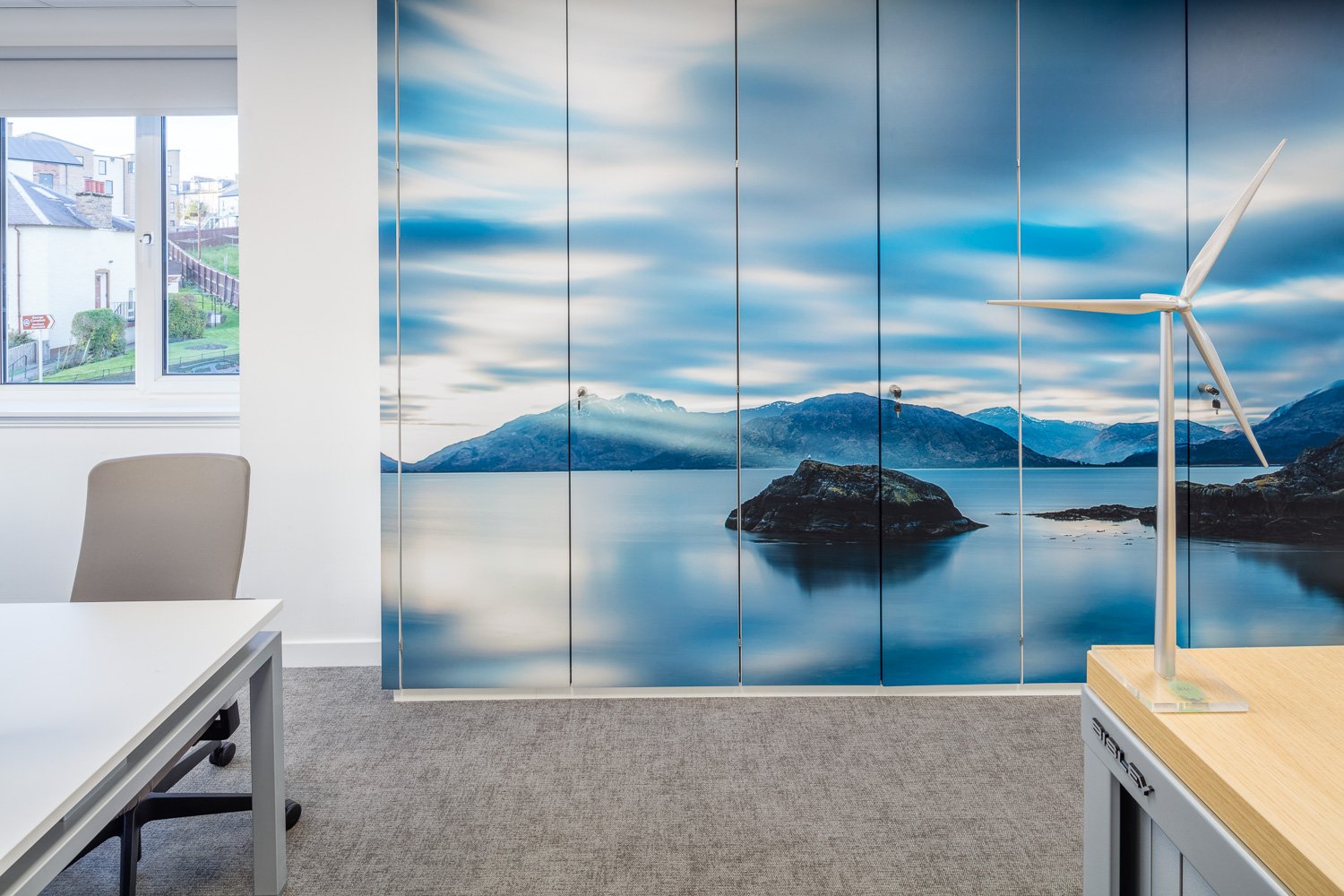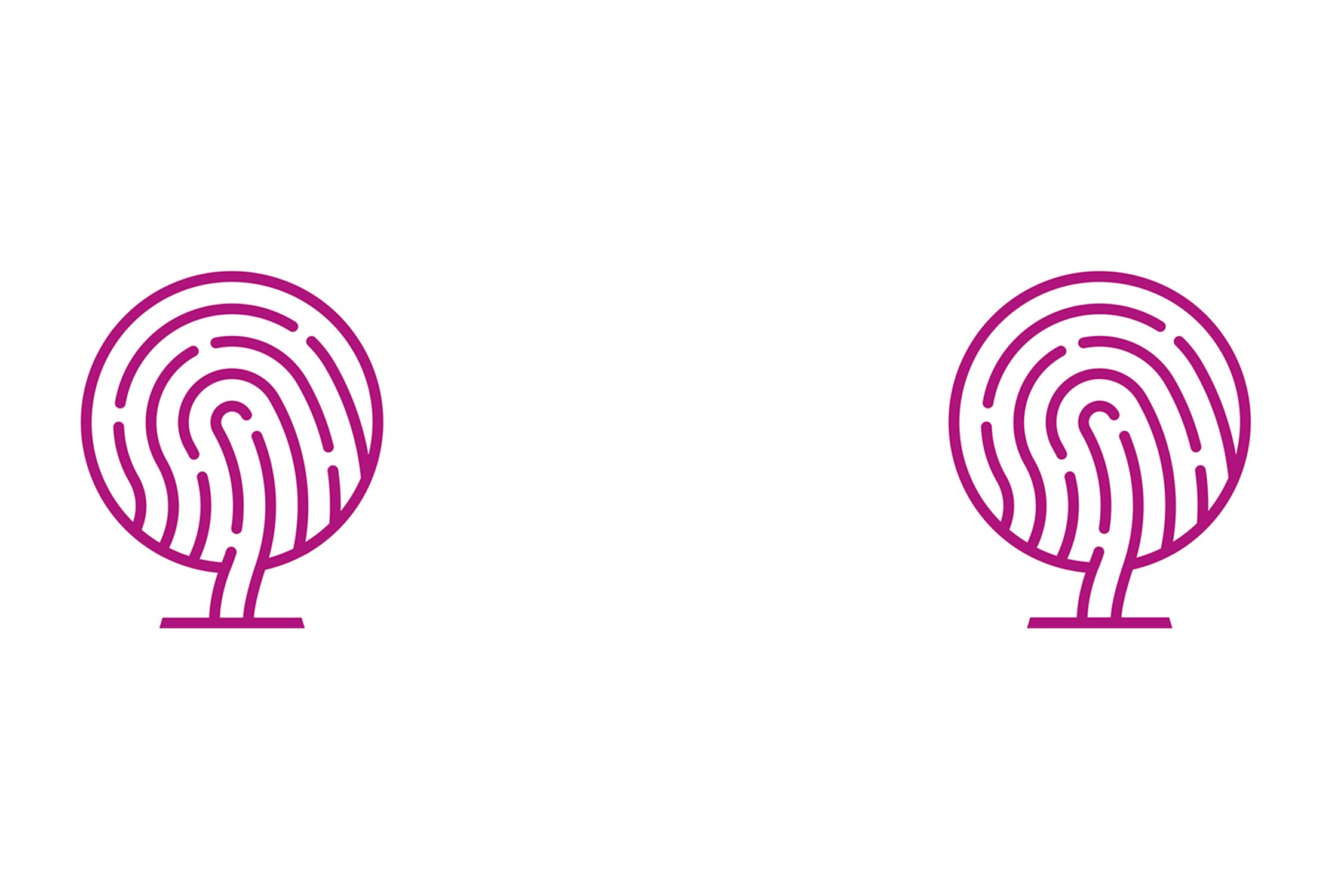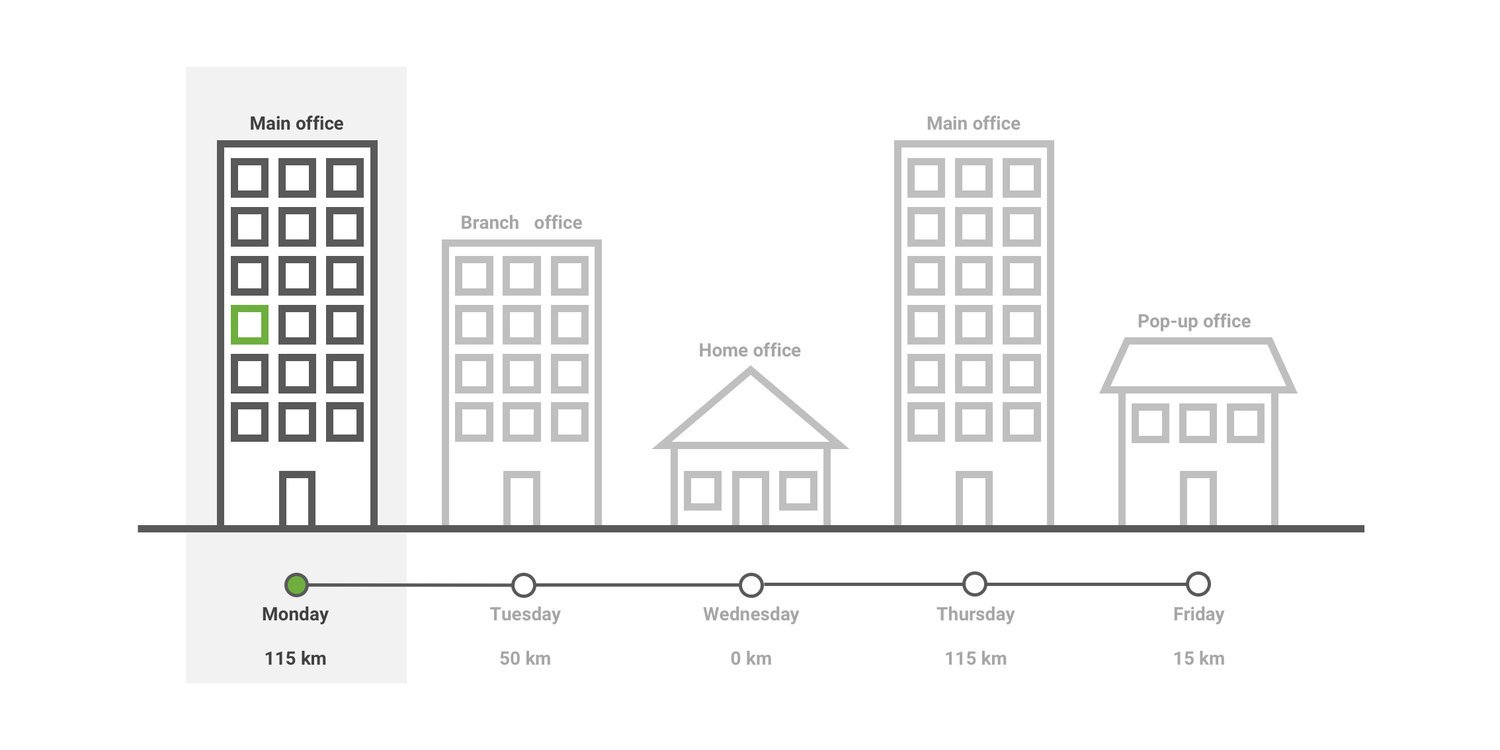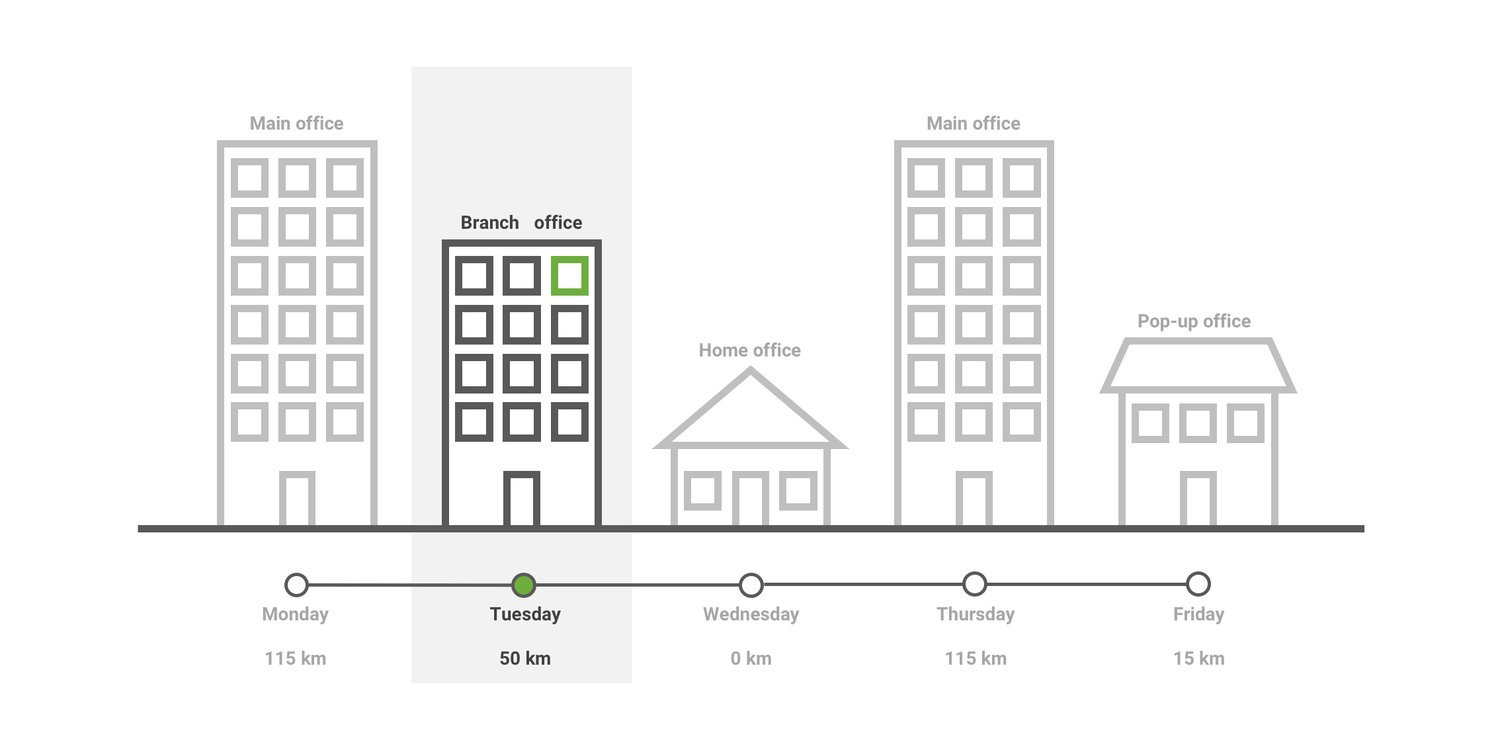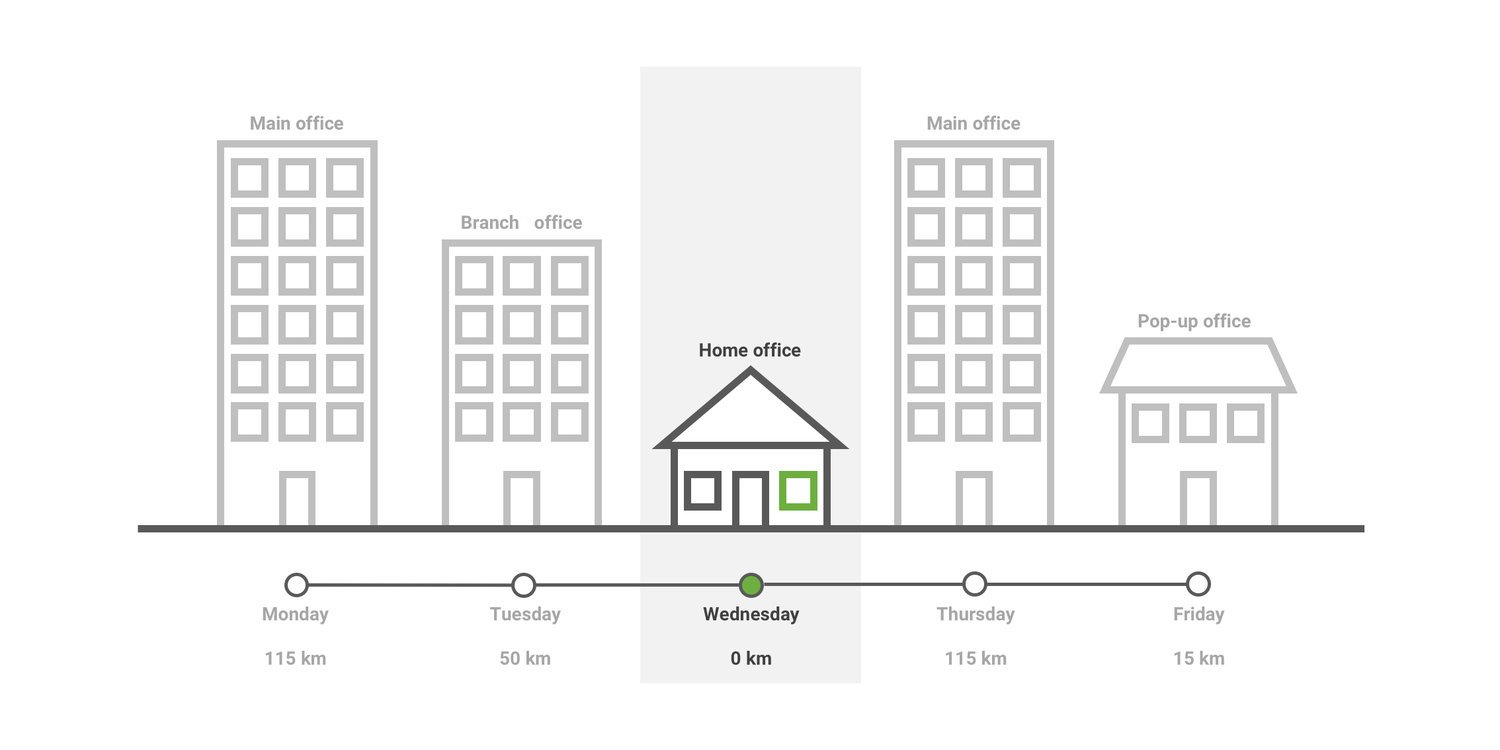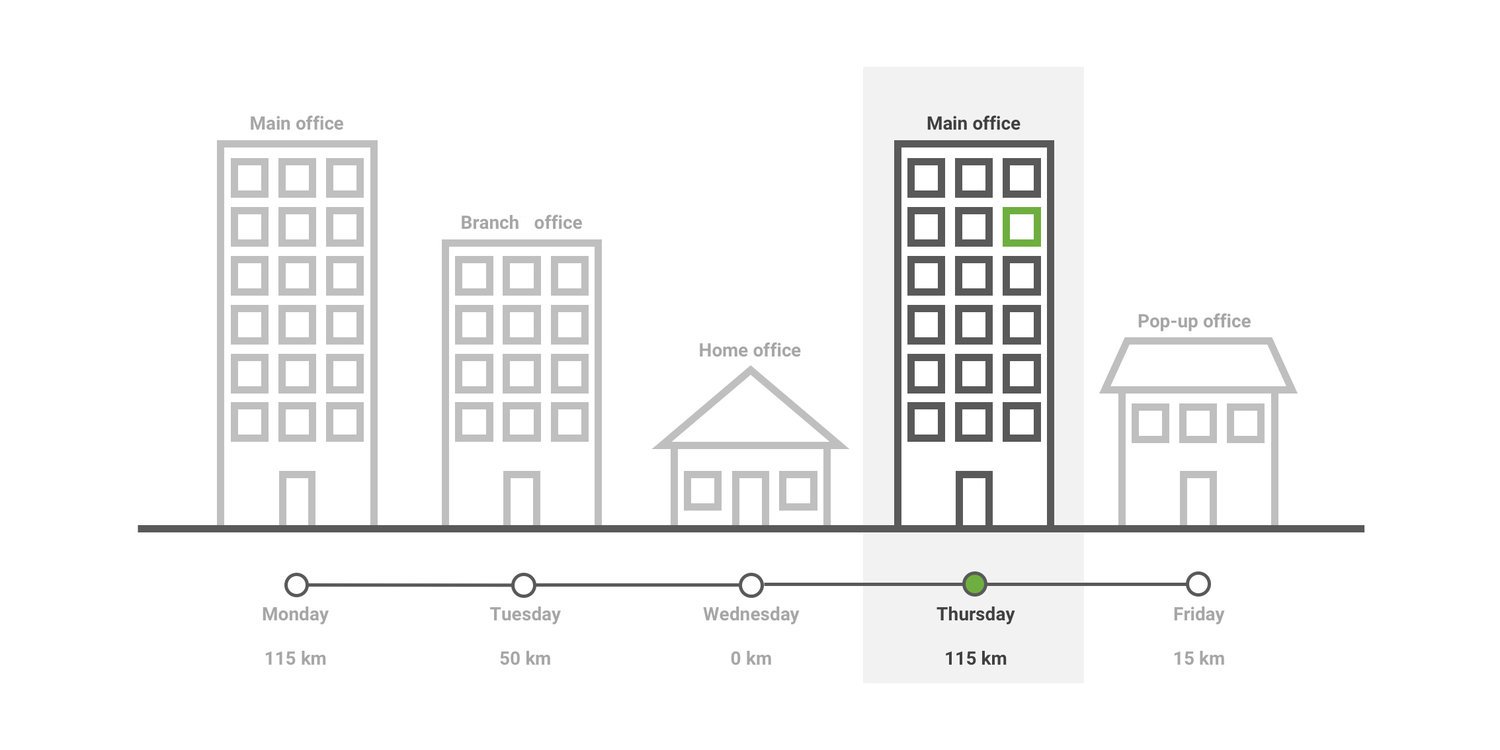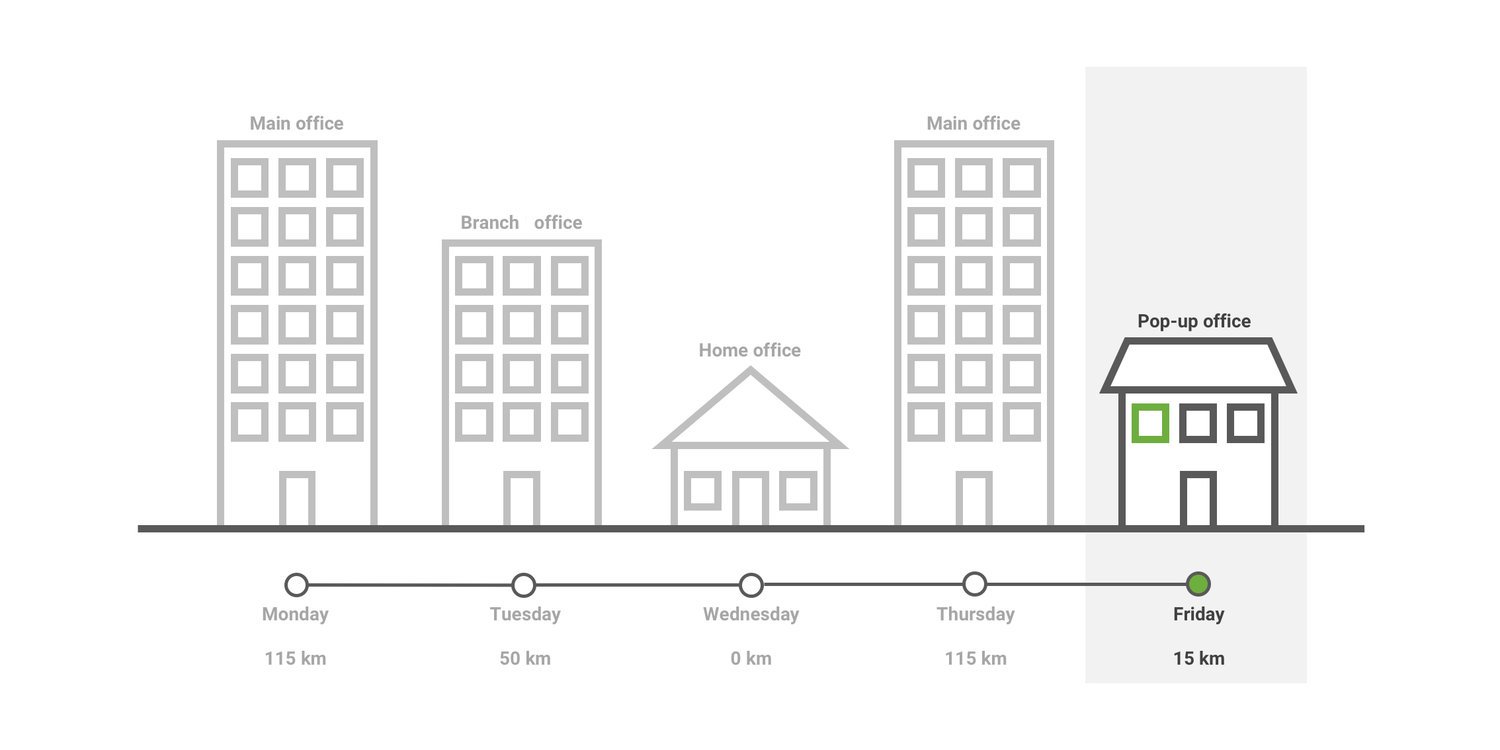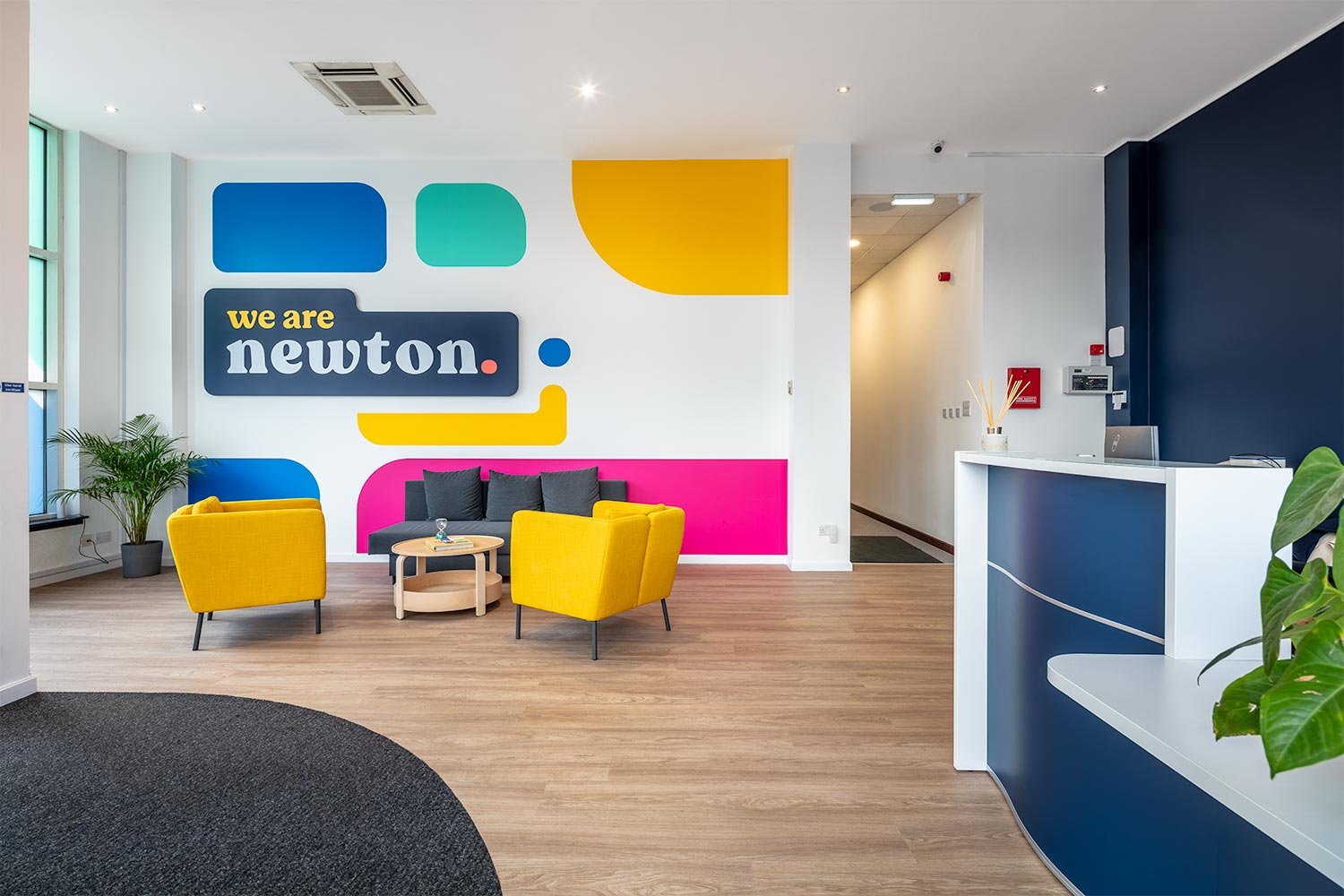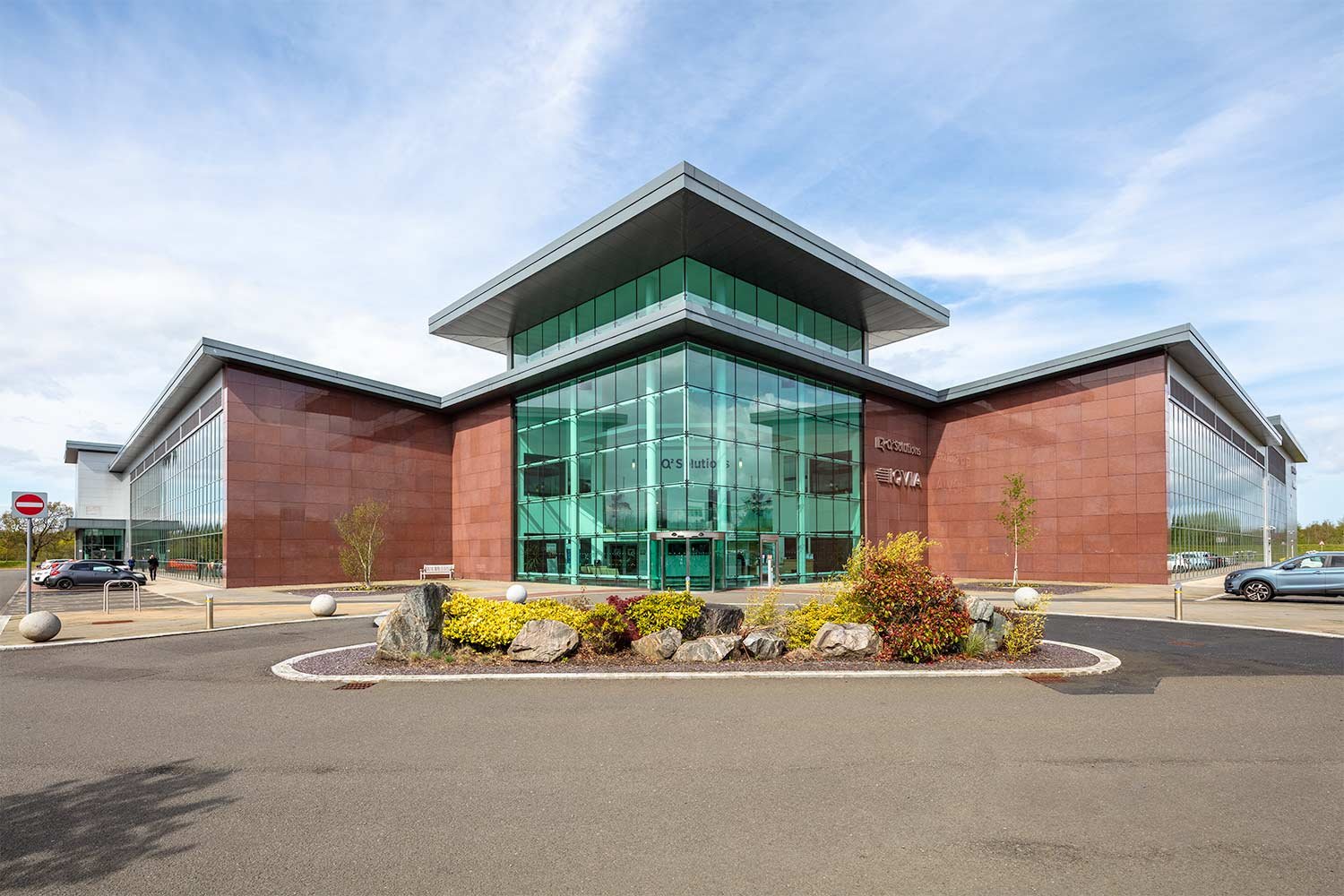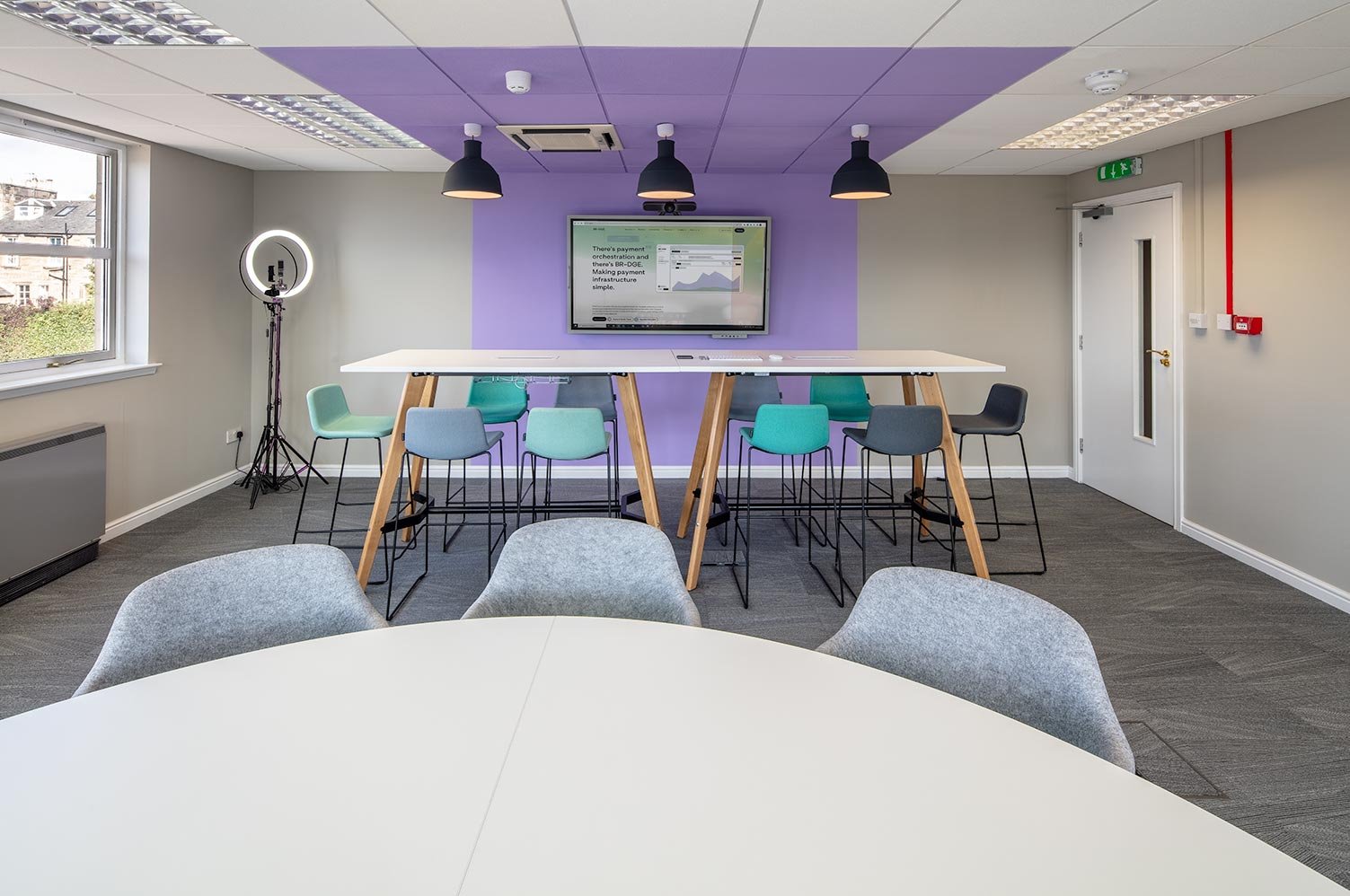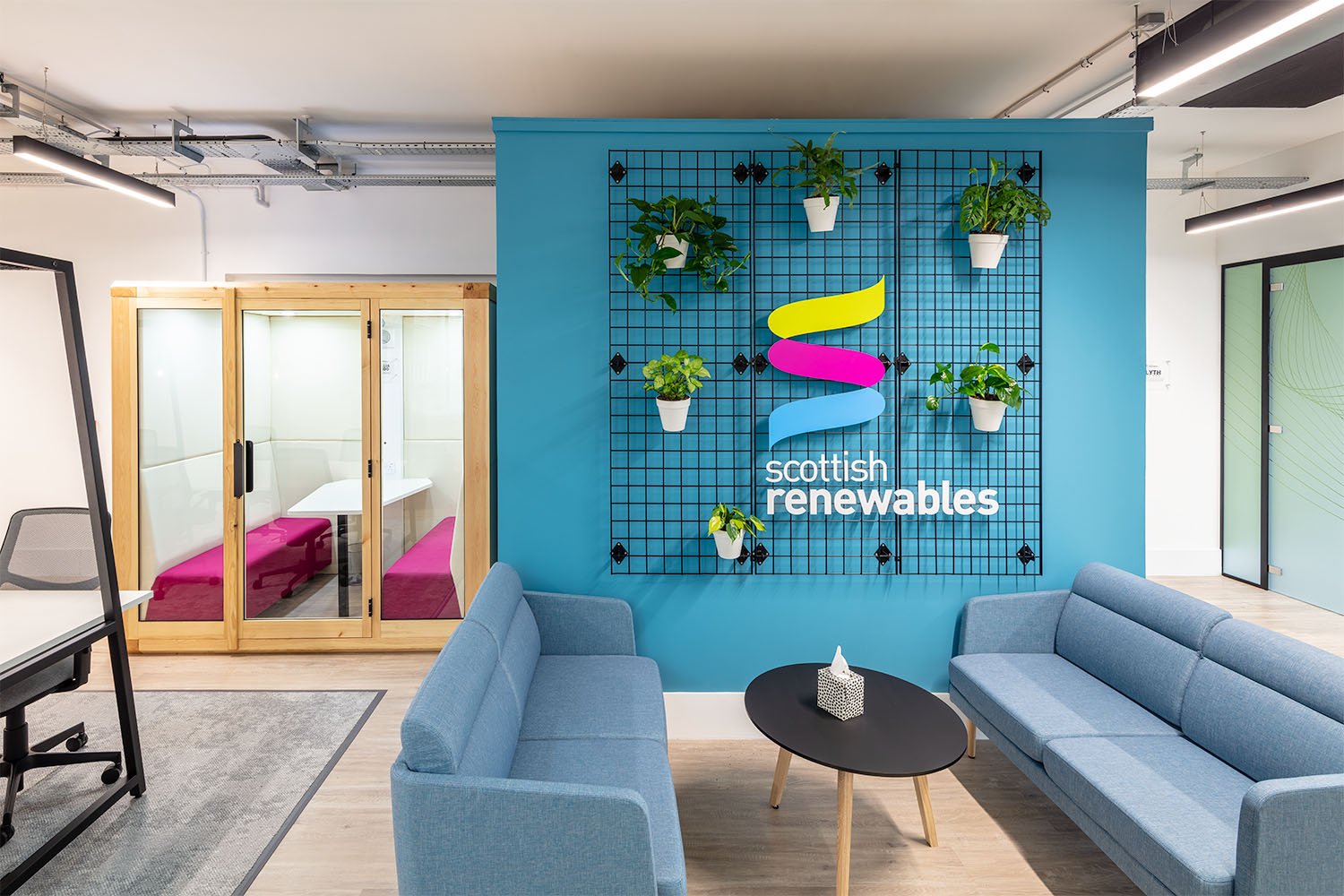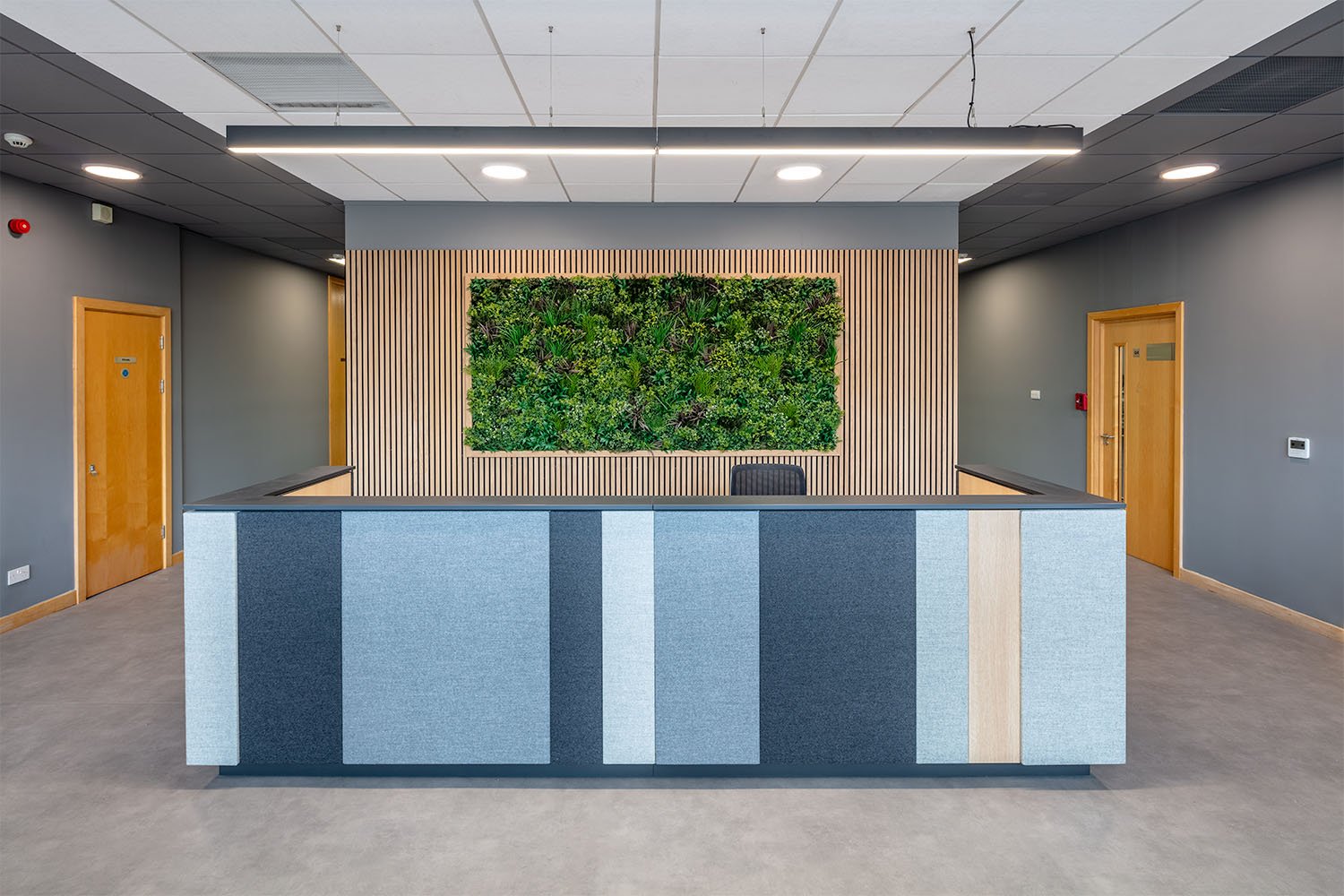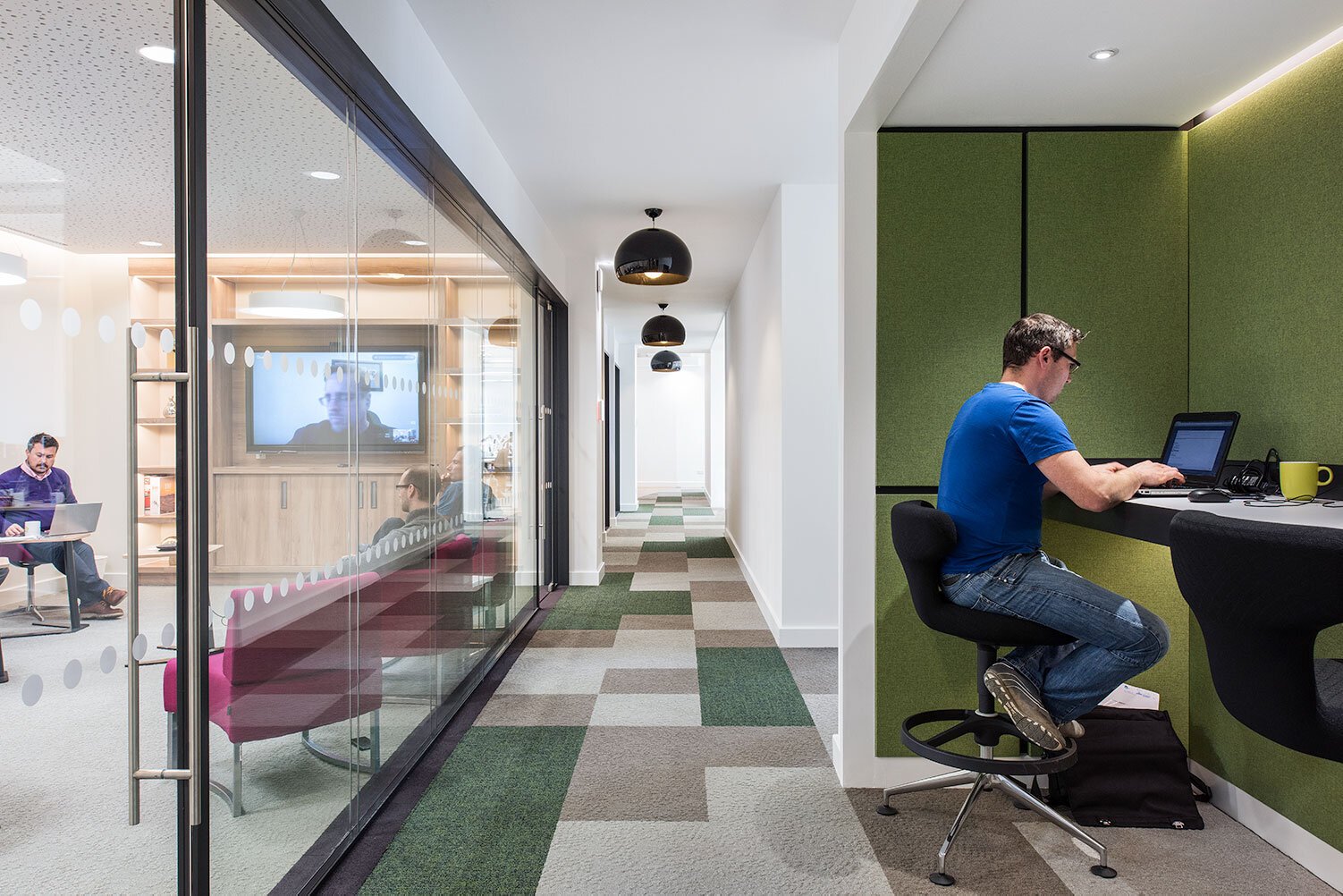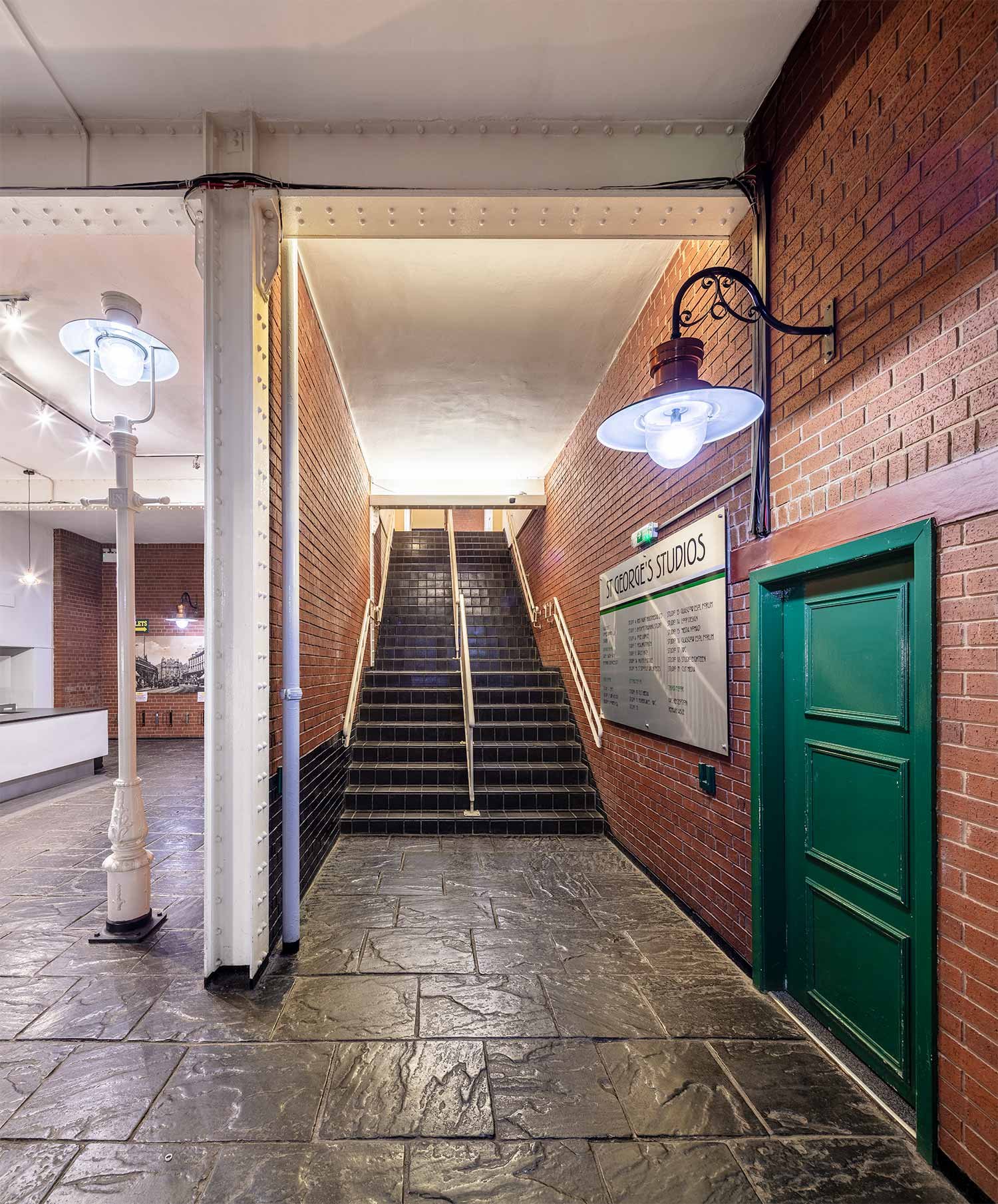What Is Activity-Based Working ?
In simple terms, activity-based working or ABW, refers to providing employees with a location choice. This means that employees get to choose a location that is most suitable for them to work from. They do not have a designated workstation, but the workplace has several areas where they can do specific tasks like focusing, socialising, collaborating and learning.
Today’s workplace has been transformed by technologies like laptops and mobile phones. These have made workers more productive by freeing them from their desks. People can work from anywhere due to their ability to access information easily from the cloud.
Business models as we used to know them are also being disrupted today and new approaches geared towards making employees more flexible and productive are needed. Activity-based working is one of these business models that provide workers with options tailored to their needs.
The driving principle behind the activity-based workplace design is that offices should be flexible enough to adapt to the diverse tasks performed by employees. Traditionally, employees were assigned a single workstation. In the activity-based workplace, employees can move around depending on the task at hand. The flexibility is built into the company’s physical office through its culture, spaceplan, workspaces and furniture.
For example, an employee can start her morning with a brainstorming session at the coffee bar, then move to a conference room for a client meeting and then move to a more private workstation to make calls and work tasks that require extra focus.
ABW @ MRI Software in Newcastle
In this case, she has no fixed desk and can move around freely to the area that provides the best environment for the activity she is handling. All she needs is her mobile phone, a laptop, and a company network.
What exactly does activity-based working bring to the table for both the company and the employees? Let’s see!
6 Undeniable Benefits of Activity-Based Working
Improves Collaboration and Communication
In an ABW environment, employees from different departments can easily collaborate on tasks and projects. This increases productivity and output since they are no longer tied to a desk all day.
Team members can seamlessly move around the workspace. In turn, this leads to better communication, easy sharing of ideas and more. This is the perfect setting for innovative ideas to be born.
Attracts and Retains Good Talent
Adopting a dynamic workplace helps engage staff, stakeholders, and visitors. You can attract the best talent by providing them with something that others don’t – unparalleled flexibility and freedom. Existing employees are also likely to stay if their workspace meets all their needs both personally and professionally.
Boosts Concentration
An activity-based office has workspaces designed for specific tasks. These can include focus group areas, collaborative zones, and quiet places.
Such spaces allow employees to be alone when they need to and to sit comfortably with their colleagues when team work matters the most. Everyone works differently. Some thrive in large crowds, others need to be alone to get their best work done. This is what activity-based working is all about.
Increases Productivity
Traditional offices have been designed for desk work and meetings only. But an activity-based workspace will allow employees to choose how they work, when and where. This recognition of the difference that makes every employee important empowers them to be responsible for their work and decide where they want to work from and when.
Builds Trust
Employees get a sense of ownership, which makes them build trust in the organisation and vice versa. This ultimately leads to company and brand loyalty.
Boosts Flexibility and Sustainability
Letting your employees choose where and when they work can help them balance their personal and work lives, which, in turn, can improve the overall employee wellbeing.
Activity-based working is the sustainable way to grow. Since it’s better at using office space than the working styles, it will help you save a lot of money on real estate. Plus, it reduces the company’s carbon footprint through cutting down on energy and supplies in the office.
Activity-based working also gives you the flexibility to incorporate custom office furniture. Get an interior design expert to recommend the right furniture to support your new working environment.
Activity based workplace design at MRI Software Newcastle
Before you dismiss it as “a new trend that will never catch on”, let us tell you that activity-based working has been around for some time now. And it’s not going anywhere.
A lot of research has been done on this topic. It all proves that it has unlimited benefits for employers and employees alike.
Of course, activity-based working is not without its challenges. They have also been exhaustively researched and documented. Read on to find out how to overcome them.
But first, let’s take a look at some of the most prominent studies.
Research on Activity-Based Working
In a survey of 400 multinational companies, two-thirds of them were open to implementing the shared desk workplace by the year 2020.
Before jumping to it, a lot of companies wanted to learn their employees’ take on the matter.
A recently published study tried to find out if 1000 Australian employees were okay with shared desk environments. Some of the challenges highlighted by the surveyed employees include distractions, increased distrust, negative relationships, uncooperative behavior, and a perceived distrust of supervisors in terms of support.
Another report on hot desking, which shares the activity-based workspace principle, identified challenges like indifference, marginalisation of employees, loss of identity, decreased commitment from organisations, and inattention to co-workers.
However, let’s take a look at the broader picture.
The activity-based workspace design provides different work settings for various activities like private work, meetings, collaborations, creativity, and concentration. The employees are, therefore, expected to make switches between the settings when necessary.
When asked how they feel about a new concept, most people shy away at first. This is why it’s important to test out an office setting before committing to it. Or, better yet, to make the change gradually.
Companies like Facebook and Google are at the forefront of innovation in this field. They adopted activity-based working “before it was cool” and never looked back.
Why?
Well, the reasons are numerous.
To begin with, in hot desking, employees share desks or find one when they need it. This caters well especially to employees who work outside the office often. Another plus side of using hot desking is that there are hot-desking apps available to help in the booking of space before arriving at the office.
In today's smart offices, hot desking applications such as the app marketed by iOt Space now enables employees to choose and book their desks in advance. This app helps avoid the confusion that could arise in case two people want to sit at the same desk. The apps help one find an available desk and they also navigate you to the desk with no delay, especially if you are visiting the office from out of town.
Office layout showing workspace occupancy
This way, some of the challenges that the studies above found are simply non-existent.
Positive research, however, has shown that employees who have self-contained work processes and who view themselves as independent and mobile thrive in activity-based work environments. They can therefore easily choose a workstation based on their preferences or needs. Another positive is that they can avoid social interaction when they need a quiet space to work from.
Its supporters say that the main reason companies implement activity-based working environments is to attract and retain talent. They also wish to take care of their employees’ sustainability and wellbeing while increasing innovation and collaboration.
Based on the various research findings discussed above, we can conclude that there is no one size fits all solution. ABW and hot desking will increase collaboration, efficiency, and communication but it will come with its own challenges.
Of course, any challenge can be surmounted. Since every company is unique and has unique needs, you shouldn’t necessarily base your decision on research done on other companies.
You can use such reports as a way to get started. Afterwards, you should consider your own circumstances.
Factors You Should Consider Before Implement Activity Based Working
Think about it this way: the way people work changes throughout their life. It’s only natural that they can accommodate (and even expect) an evolution of their working environment.
During the school years, everyone knew a certain space was dedicated for a certain activity. There was no in-between. For example, the music room for music, the gym for sports and the laboratory for science.
When they got into a university, they had the choice to either get the group work done under a tree, at the café, or in the library. A traditional workspace may therefore not work for them. Organisations have no choice but to embrace these new ways of working if they want to retain and attract new talent.
Before making the change, however, employers have to consider some important factors including:
What Are the Reasons for the Change?
Why do you want to implement activity-based working? Are you doing it because everyone else is? Do you feel like your peeps could benefit from more interaction?
Activity-based working encourages collaboration and therefore your business can easily pull a team from different departments in your organization to work on a project if everyone is mobile. Employees are different, and this difference is what makes activity-based working a good model.
Those who require isolation can work at their own stations while those who thrive in a noisy work environment can also do their thing. It encourages responsibility. More importantly, employees are treated as adults who can choose an environment that makes them productive.
Before making the decision, consider your employees. Ask them how they feel about it.
Make Sure Your C-Suite Supports the Move
If they do, then they will offer you support and advocate for the chance by leading by example. Otherwise, everything may be doomed from the start.
If your employees see that C-level execs never step foot in the common workspace, they will feel discriminated and treated as less important.
Of course, we all know that C-level execs need privacy. But they also need to be among their team every once in a while, don’t they?
Choose the Best Model for Your Team
As previously mentioned, there is no one size fits all when it comes to designing your office. Do a thorough research on the different models available and then choose one that suits your organisation’s needs. Obiously you can ask the workplace consultants here at Amos Beech for help.
Take Change Management Seriously
As you invest in this move, make sure your employees are educated on why the move is necessary, the benefits of the move, what will be changing, and why this particular model has been chosen. Use an effective communication plan that will involve different mediums and engage employees at all the levels of the organisation.
Test Drive before Purchasing
Test whether the change will be effective using a pilot workspace. This is an effective change tool because, from it, you can tell whether the move will benefit the company or not.
The pilot will also be a learning phase that will help you tailor a suitable working model as per your needs. Plus, it will help the employees warm up to the new way of doing things and how it will eventually affect them.
Don’t Be Discouraged by Negativity
Change is hard and some of your employees will not be thrilled by it. Learn from them but do not let them bring you down.
Recruit the Right People and Rid the Company of Paper
Activity-based working can enable you to manage all your records electronically. This will reduce your carbon footprint and turn you into a more desirable employer and business partner for your clients.
Also, make sure you recruit leaders with skills and expertise in activity-based working so they can help other employees easily adapt to the new move. Safeguard your investment by choosing the right people to handle it.
Final Thoughts
According to a case study by UK’s HR Magazine on Atlas Copco’s introduction of activity-based working at their UK office, the exercise proved to be successful.
The company implemented a cockpit for individuals needing privacy, a larger cabin that allowed for small groups to work together, and an open space furnished with multiple desks. This gave them a digital workspace that can be reconfigured whenever the needs of an employee change. The employees are now more connected and engaged since their working conditions have changed for the better.
Activity-based working benefits may not be felt immediately, but they are broader and long-term. And if they are properly executed, they can foster the wellness of the employees by improving their mental, physical, and social wellbeing.
Got 4 minutes?
Go and watch a really great video! Veldhoen + Company have created a great animation about what Activity Based Working is and what it isn't:
Most important takeaway:
"Whats really needed is a workplace tailored to the actual needs of people.”
Going Agile?
Agile working is probably the most widely discussed ‘new’ method of working.
But what does it really mean?
In a nutshell, going agile is when a company becomes flexible in their approach to work. It’s when they choose to trust their employees instead of keeping them on a strict schedule.
It explores the idea that nobody should spend their whole day at a desk. Thus, you will never find the whole workforce of a company in the office at the same time. Five years ago, it was the work style that revolutionary companies were adopting and that the others would stand and watch in awe.
Agile Working
Agile working has been defined as a tool organisations use to help employees work efficiently and improve productivity. By going agile, employees enjoy the flexibility to work when, how, and where they choose to.
But even with the rising adoption, many still approach agile working with caution. This new trend still continues to raise eyebrows with the conservatives adopting a wait-and-see attitude.
Flexible working is the most controversial form of change. Before you decide on adopting agile working, you should ask yourself some questions:
Would you as an employer allow some of your workforce to work from home or in co-working areas?
How keen are you on micromanagement and what is your work culture?
What are your employees’ preferences?
How do you collect office occupancy data?
Do you want real-time and historic insight?
Don’t worry. We’ll help you answer all of these.
Well start by telling you that through information technology and communication, employees work with fewer constraints and maximum flexibility. This optimises their performance since they work in ways that suit them.
Work, in agile models, is an activity rather than a place. It’s aimed at making organisations efficient, effective, and more responsive. People do not need to be at the same desk all day since they can work where and when they choose. Some tasks don’t even require desks.
Agile working is, however, not a one size fits all concept. Before its implementation, one needs to convince all stakeholders of its benefits. These benefits differ from organisation to organisation, of course. But some of these benefits can be found in almost all agile companies, irrespective of their size and the industry they are in.
Top Benefits of Agile Working
Increased efficiency and productivity
Reduced property costs
Smart workspace utilisation
Reduction of carbon footprint
Reduced fuel and parking cost
Extended business hours without additional costs
You can meet all your customers’ expectations.
You can hire the best talent in the industry
Optimum use of employee skills
Motivates employees who, in turn, are better equipped to innovate
Business continuity is improved since disruptions due to travel problems, bad weather and security are reduced.
Boosts employee performance
Technology advancements have also made it possible and easy for organisations and agile workers to quickly adopt this concept. Applications such as iotspot make it possible to maintain these agile workspaces remotely.
iotspot ensures that your office space is based on actual usage. It ensures that you get smart workplaces that attract the right employees, reduce waste, and significantly bring down costs.
The app benefits both the organisation and its employees by helping them:
1. Find and Book a Workspace
The app allows users to find and book a space that will suit their needs. Whether they want to work at a private booth, have a conference meeting with 5 of their colleagues, or get an unoccupied desk at a place of their choosing, the app makes it possible.
And that's way better than this:
With it, you can occupy a workspace immediately or book in advance. It makes things easier by avoiding overbooking and making sure one finds a free desk even in a busy room. The app uses color to show if space is available (green), reserved or partly available (blue) or occupied (red).
2. Search for Colleagues
The app helps you know where colleagues are. The activity-based working environment that the app provides allows you to make your bookings to suit your needs.
Colleagues are made visible and this makes co-working possible. You can search for free desks together to help you set up a workgroup, share your location with colleagues. If you want a shake-up on a Friday, let the app choose a random desk for you to allow you to network with colleagues you don’t yet know.
3. Real-Time Booking
You do not need to call the reception to make a booking.
No! You can do it on the go. The app goes further and helps you navigate to your booked desk especially if you don’t know the layout of the workspace.
4. Share Workspaces and Charge for Office Usage
Agile working means that people can work from wherever suits them. The app makes this flexibility a reality by offering office sharing and charge per usage options.
It helps show and authorise availability of office locations across, between or within an organisation. This helps reduce commute, usage of facilities and office materials.
5. A Smart Work Environment
iotspot is independent from the IT structure. Your only requirements will be a USB port that makes the workspace available in the app. With this, you get a smart building and can now invite users to get started.
Integrating Agile Working with iotspot
The app can help organisations get insights into how their workspaces are being used. One can tell what desks are popular, which ones are not, and which environment people like to hang out in. From these insights, you can tell whether the agile working model is working for your organisation and whether employees fully understand the concept and benefit from it.
Data collection is done via different methods including movement sensors. These are placed under desks and meeting tables to collect actual usage data.
iotspot can also be used in conjunction with counter sensors and CO2 in meeting rooms to determine what size of a meeting room an organisation needs.
This data is collected anonymously and can be used to drive future workspace decisions and improve workplace environments. This then leads to a happy and productive workforce and savings on corporate and real estate.
This is achieved by allowing employees to choose where they want to work from and at what time through the app. Booking in advance allows for the desks and rooms to be held for workers and if they fail to show up, they become available for someone else. Meeting bookings can also be done in advance using the app calendar, Google calendar or MS Outlook.
Users who are not willing to pre-book can walk in and have the app guide them to an empty space using the Google Maps in the app. The status of the desk then changes from red to green after you check in.
Imagine how much easier the scenario below would have been:
The on-desk device helps to give the desk status by showing whether it’s occupied or not. If you leave the desk, your app sends a message after a stipulated amount of time to confirm if you still need the desk. If you fail to confirm, the desk reverts to free automatically.
The app, with all these amazing functions, helps your organisation implement agile working effortlessly. Desks become free for other people to use and office space is reduced.
Integrating with this agile working app could mean a change in how organisations run their businesses. There are many ideas on how it can be used to revolutionise working spaces in the future. For example, through iotspot, you can automatically free up parking spaces typically reserved spaces for people who are not in the office.
Another development is the introduction of a payment function to those running co-working spaces. With this, they can charge users per usage instead of monthly.
We also see a future where as each iotspot is placed on a workstation, an FM messaging option can be developed to inform the team of any challenges at the workspace. These could include faulty lights and problems with power and screens. This would make solving issues easier since all the information about the specific defect and where it happened would be on the app.
Implementing Agile Working
Agile working implementation should be business-led. It should address both employee and business needs.
To start, find out and understand what your business and employees need. Work with your employees and learn what their ideal work environment is. If you involve them and implement agile practices that add value to them and to your business, you get a productive and loyal workforce.
It’s imperative to also educate the organisation’s leadership on why you need the change and how to implement it. Having them on your side will eliminate any barriers towards the change. Your agile organisation will work better, have an engaged workforce and you will get extra value for your investment.
Conclusion
Research shows that, on average, desk occupancy in most offices is 45-50 percent. This means that, on most days, desks are empty either due to sick leave, holidays, or leaving the office.
Part-time employees, employees who often travel to meetings and conferences and those who work from home also get full-time desks that on most days remain empty. If you do a survey of your office space, you will find that there is no time it’s 100 percent occupied. Space sharing is, therefore, a good thing to consider.
With agile working, you bring people, processes, space, and technology together to offer an appropriate and effective way of completing tasks. People can work without boundaries from anywhere, anytime and this improves productivity. The time to start collaborating and changing the future is now!
Amos Beech launches revolutionary new office app for agile working
Workplace consultants Amos Beech have launched a revolutionary new app for people to plan their agile working day.
The iOt Space app is a workspace reservation solution to manage flexible workspace environments.
Amos Beech launches revolutionary new office Agile Working app into the UK market
The iOt Space app is a workspace reservation solution to manage flexible workspace environments. Benefits to companies range from reducing employers’ heating and cleaning costs to increasing staff productivity, efficiency and wellbeing in the workplace.
Using a colour-coded system, at the touch of a button you can find your workspace and colleagues, make unoccupied and hidden workspaces visible, have one solution for meeting rooms and workplaces and be up and running within just one week. The ideal solution for agile working and helps your workplace o turn into a truly smart office!
The device shows real-time availability for each workspace and the beauty is you can occupy a workspace on the spot or book in advance from home so gone are the days of over-booking or embarrassment when you can’t find a free desk in a busy room full of workers you may not know.
iOt Space uses colours to show if workspaces are free (green), reserved (blue) or occupied (red). In the app on the phone it is also visible to who is using what workspace so workers can see availability and at what times.
The iOt Space agile working app features:
Finding and booking workspaces
Search colleagues
Privacy: only share what you want to share, data deleted after 23:59h
LED badges easily identified by different colours
Support team assistance.
For more information click here: AGILE WORKING
Agile working is innovative, different and cost-effective flexible working so workers can choose to work where, when and how they want in a more sociable inter-active office.
Amos Beech is a leading Interior Design, Fit Out and Furniture company based in the Scottish Central Belt. Amos Beech offers the iOt Space solution as an integral part of its Samuel Bruce furniture range or as a retrofit option.


























